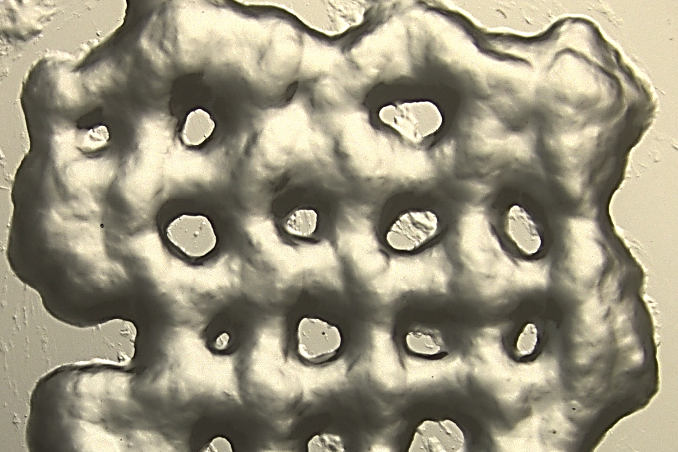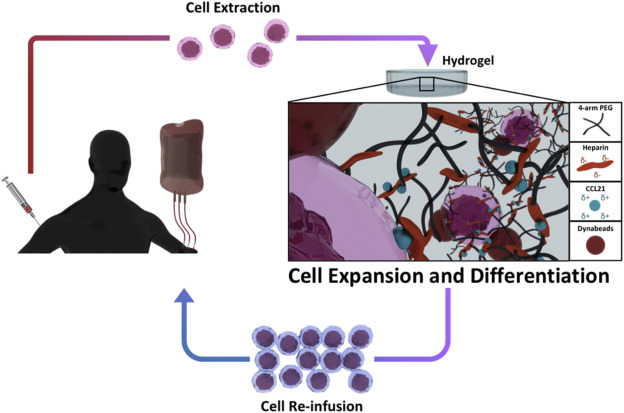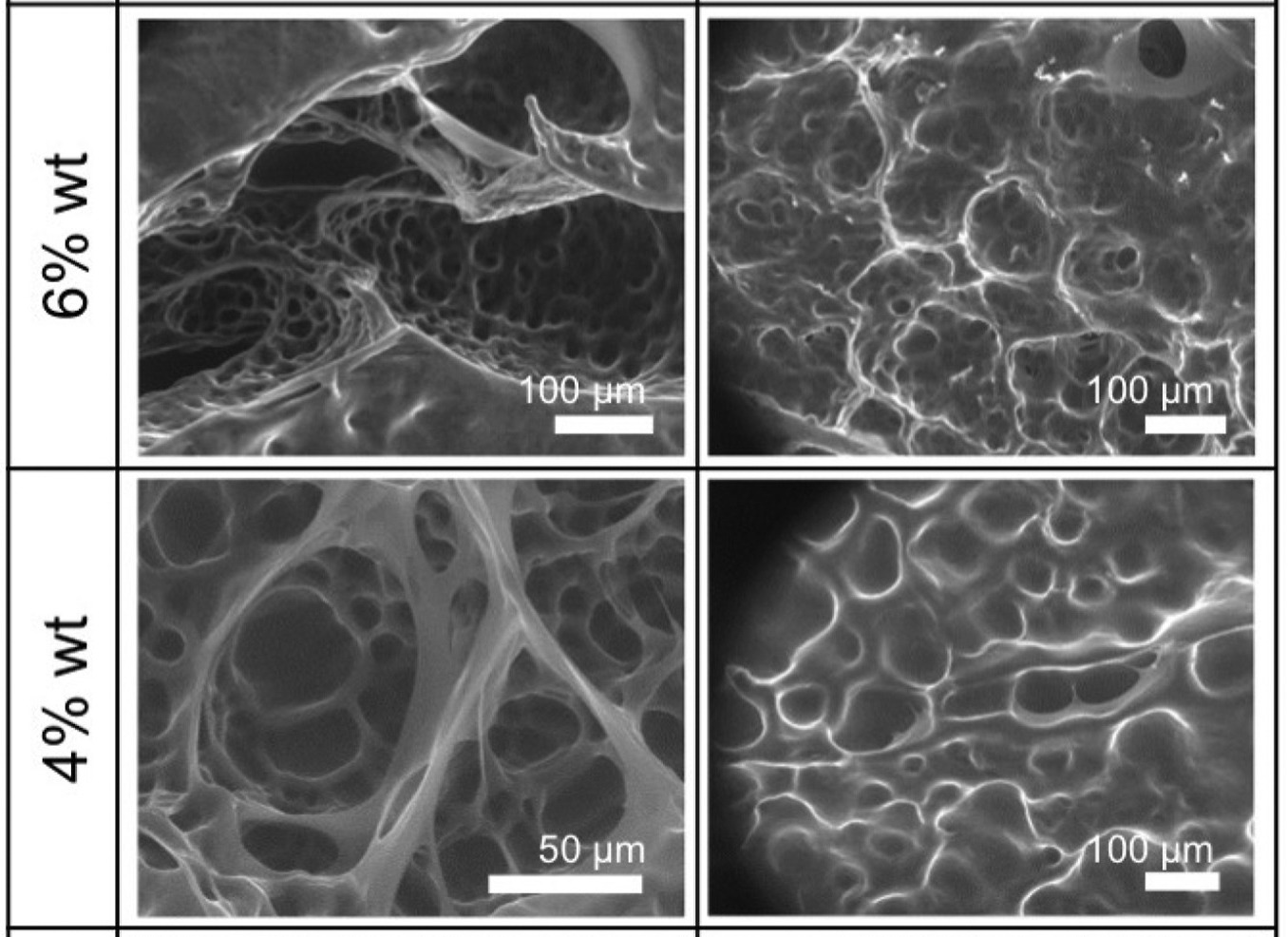China3D printingNet September 3, a research team led by Spain3D printingA hydrogel that mimics the behavior of human lymph nodes and accelerates the production of T cells in cancer patients.
By combining polyethylene glycol (PEG)-based polymers and anticoagulant heparin, the team created a structure that allows T cells to migrate and proliferate more efficiently. Given the ability of T cells to kill tumor cells, the research team’s new materials can be used as the basis for new cancer immunotherapy. Scientists have applied for a patent for their new polymer hydrogel to the European Patent Office, and they hope to bring their technology to hospitals in the near future.

3D printing
Hydrogel can be deployed in hospital environment as soon as possible” alt=”The research team wants their
3D printing
The hydrogel can be deployed in the hospital environment as soon as possible” width=”620″ height=”413″ />
The research team wants their3D printingThe hydrogel can be deployed in a hospital environment as soon as possible, and an attempt has been made to patent its process. The picture comes from “Biomaterials” magazine.
right3D printingThe need for T cell solutions
In contrast to chemotherapy and surgical treatment of cancer, immunotherapy uses the patient’s immune system to defend against deadly diseases. Cancer can appear in existing cells and can evade the immune system’s response, but T cells can be programmed to identify and destroy such cells with varying degrees of success.
However, T cell-based methods face challenges, because modified cells may be difficult to manufacture, and manipulating and controlling a sufficiently large dose can be effective against cancer. In addition, treatment methods based on tumor infiltrating lymphocytes (TIL) can actively search for and eliminate tumors, so there is an urgent need for cell expansion systems to promote their widespread adoption.
Previous studies focused on the in vitro proliferation of T cells, but these methods failed to take the impact of human lymph nodes into consideration. For example, the cytokine CCL21 is a chemical substance that exists in lymph nodes. It interacts with naive T cells through the chemokine receptor CCR7 and enhances cell proliferation and migration.
at the same time,3D printingThe extracellular matrix (ECM) is usually used to simulate real ECM, with the purpose of creating a nourishing environment that encourages cell expansion. In addition to providing more realistic conditions than standard petri dishes, artificial ECMs can also be customized using different proteins and growth factors to enhance cell growth.

A simplified diagram showing the process of adoptive cell therapy. The picture comes from “Biomaterials” magazine.
The novel approach of the Spanish research group
The researchers combined CC21,3D printingThe advantages of the PEG-based ECM and the blood thinner heparin together create an ECM that can reproduce the condition in the lymph nodes. If successful, the research team’s hydrogel can actively improve the proliferation of CD4 T cells, and at the same time, it can fine-tune the cell differentiation of adoptive cell therapy (ACT).
To create their ECM hydrogel, the Spanish research team functionalized heparin with a maleimide chemical. The mixture was then left overnight, then purified by dialysis and combined with the PEG complex covered with phosphate buffered saline (PBS). After the merger, covalent cross-linking occurred, leading to gelation, which ultimately created the team’s new type of hydrogel.
Later, ECMs with weight percentages of 6% wt, 4% wt, and 3% wt were manufactured. The subsequent rheology showed that each ECM needs 200-240 minutes to stabilize. Using scanning electron microscopy (SEM) methods to study these three different formulations, the results revealed the correlation between small amounts of PEG and high porosity.
Further analysis showed that the observed median pore size was 55 μm. Compared with thicker substrates, ECM with this porosity or a lower level is more conducive to cell expansion. As a result, 3%wt hydrogel is considered to be the most friendly to T cell aggregation and proliferation. Then different concentrations of 1 ng/ml, 20 ng/ml and 100 ng/ml CC21 cytokines were added to the ECM mixture to assess the expansion of CD4 T cells.

Researchers’ tests have shown that a higher ECM porosity corresponds to a lower cell proliferation rate. The picture comes from “Biomaterials” magazine.
Summary The viability test of propidium iodide (PI) showed that compared with the ectopic suspension state, the replication of T cells in PEG-ECM increased by 25%. It was also found that hydrogels loaded with cytokines can promote an increase in the proportion of effector cells, which means that the composition of T cells can be modified in the future to increase their toxicity to cancer cells.
China3D printingNet Comments: The research team’s method has proven to be an effective alternative to the in vitro cell proliferation technique. Various evaluations were used to encourage cell growth, and it was also demonstrated that CCL21 was added to the team’s hydrogel. As a result, the researchers speculate that other chemical molecules, such as CCL19 and ICAM-1, may bring better clinical results for patients who need further research.In the future, the Spanish-led team believes that their novel PEG-based hydrogel can be widely adopted in hospital settings.The research team said in the paper: “The scaffold improves cell proliferation and affects the phenotype. It can be further explored when manufacturing artificial lymph nodes. It is expected.The 3D PEG-Hep hydrogel loaded with CCL21 will also be compatible with perfusion systems and new bioreactors to work in large facilities under Good Manufacturing Practice (GMP) conditions. “
China3D printingnetCompile the article!
(Editor in charge: admin)


0 Comments for “Spanish research team has developed 3D printed T cell hydrogel for cancer patients”